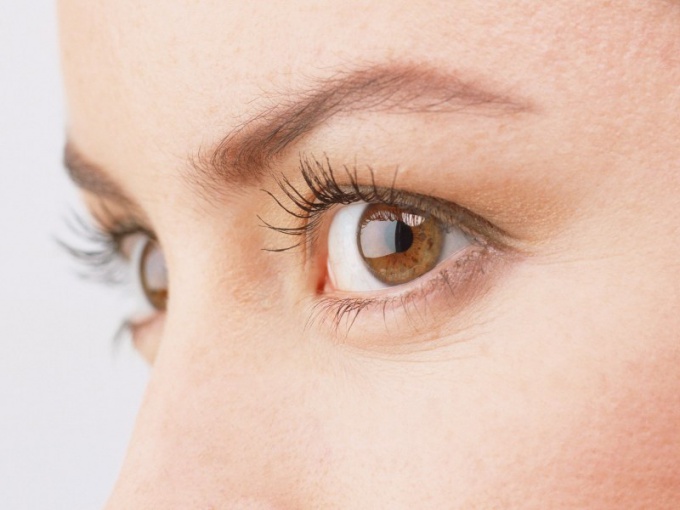Overview of peripheral vision
Peripheral vision is one of the constituent parts of the visual apparatus, which is responsible for the boundaries of the field of view when projecting them to the spherical surface. The field of view is a kind of space that is perceived by the eye only in a stationary state. The visual field is one of the functions of the peripheral parts of the retina, which determines the ability of a person to easily navigate the space.
The main indicator of productivity of peripheral vision is the viewing angle of the person.
As for increased field of vision, he has a specific value that defines the border of the retina. So, for example, the white color of the eye responds only at a 90º angle - outwards retina, 70º - up outwards, 55º - up inside, 55º - inside, 50º - down inside, 65 - bottom, 90º and down to the outside.
"Blind spot" is one such physiological cattle which is in the region of the temporal visual field. Along with physiological scotoma there are angioscotoma (ribbon-like "loss" arising from increased reticuline vessels, closing photoreceptor cells), but they only slightly impair peripheral vision and are the norm.
Those areas that fall out of sight, called "scotoma".
Scotomas are divided into three types:
- positive;
- negative;
- ciliated.
Positive scotoma can recognize themselves in the form of black spots in field of vision. They are the first sign of damage to the retina. Negative scotoma can be identified only through survey. The cause of the cattle – damage pathways.
Atrial scotoma appear spontaneously. They mostly arise due to spasms of cerebral vessels. In case, closing his eyes, he sees multi-colored zig-zag lines outside the peripheral vision, experts recommend immediately start taking antispasmodic drugs.
The list of issues contributing to the deterioration of peripheral vision
Deterioration of peripheral vision contribute to the following vision problems:
1. The initial stage of cancer and inflammation. In such diseases may be lost ¼ of the field of view.
2. Various pathologies of the retina. Depending on this, the vision may deteriorate in different areas. For example, glaucoma contributes to the narrowing of the visual field in the nasal area.
3. Of nerve injury and retinal degeneration. This problem leads to a narrowing of the field of vision on all sides by 5-10º, this phenomenon is called concentric contraction of the visual field. In this disease the person can see and read, but completely loses the ability to navigate in space.
In any case, if you experience even the slightest hint of deterioration of peripheral vision should seek the advice of professionals. After completing the survey, they will put the correct diagnosis and will help you keep your vision.
